- Essay Samples
- College Essay
- Writing Tools
- Writing guide


Creative samples from the experts
↑ Return to Essay Samples
Descriptive Essay: The Industrial Revolution and its Effects
The Industrial Revolution was a time of great age throughout the world. It represented major change from 1760 to the period 1820-1840. The movement originated in Great Britain and affected everything from industrial manufacturing processes to the daily life of the average citizen. I will discuss the Industrial Revolution and the effects it had on the world as a whole.
The primary industry of the time was the textiles industry. It had the most employees, output value, and invested capital. It was the first to take on new modern production methods. The transition to machine power drastically increased productivity and efficiency. This extended to iron production and chemical production.
It started in Great Britain and soon expanded into Western Europe and to the United States. The actual effects of the revolution on different sections of society differed. They manifested themselves at different times. The ‘trickle down’ effect whereby the benefits of the revolution helped the lower classes didn’t happen until towards the 1830s and 1840s. Initially, machines like the Watt Steam Engine and the Spinning Jenny only benefited the rich industrialists.
The effects on the general population, when they did come, were major. Prior to the revolution, most cotton spinning was done with a wheel in the home. These advances allowed families to increase their productivity and output. It gave them more disposable income and enabled them to facilitate the growth of a larger consumer goods market. The lower classes were able to spend. For the first time in history, the masses had a sustained growth in living standards.
Social historians noted the change in where people lived. Industrialists wanted more workers and the new technology largely confined itself to large factories in the cities. Thousands of people who lived in the countryside migrated to the cities permanently. It led to the growth of cities across the world, including London, Manchester, and Boston. The permanent shift from rural living to city living has endured to the present day.
Trade between nations increased as they often had massive surpluses of consumer goods they couldn’t sell in the domestic market. The rate of trade increased and made nations like Great Britain and the United States richer than ever before. Naturally, this translated to military power and the ability to sustain worldwide trade networks and colonies.
On the other hand, the Industrial Revolution and migration led to the mass exploitation of workers and slums. To counter this, workers formed trade unions. They fought back against employers to win rights for themselves and their families. The formation of trade unions and the collective unity of workers across industries are still existent today. It was the first time workers could make demands of their employers. It enfranchised them and gave them rights to upset the status quo and force employers to view their workers as human beings like them.
Overall, the Industrial Revolution was one of the single biggest events in human history. It launched the modern age and drove industrial technology forward at a faster rate than ever before. Even contemporary economics experts failed to predict the extent of the revolution and its effects on world history. It shows why the Industrial Revolution played such a vital role in the building of the United States of today.

Follow Us on Social Media
Get more free essays

Send via email
Most useful resources for students:.
- Free Essays Download
- Writing Tools List
- Proofreading Services
- Universities Rating
Contributors Bio

Find more useful services for students
Free plagiarism check, professional editing, online tutoring, free grammar check.

The Industrial Revolution: Causes and Effects
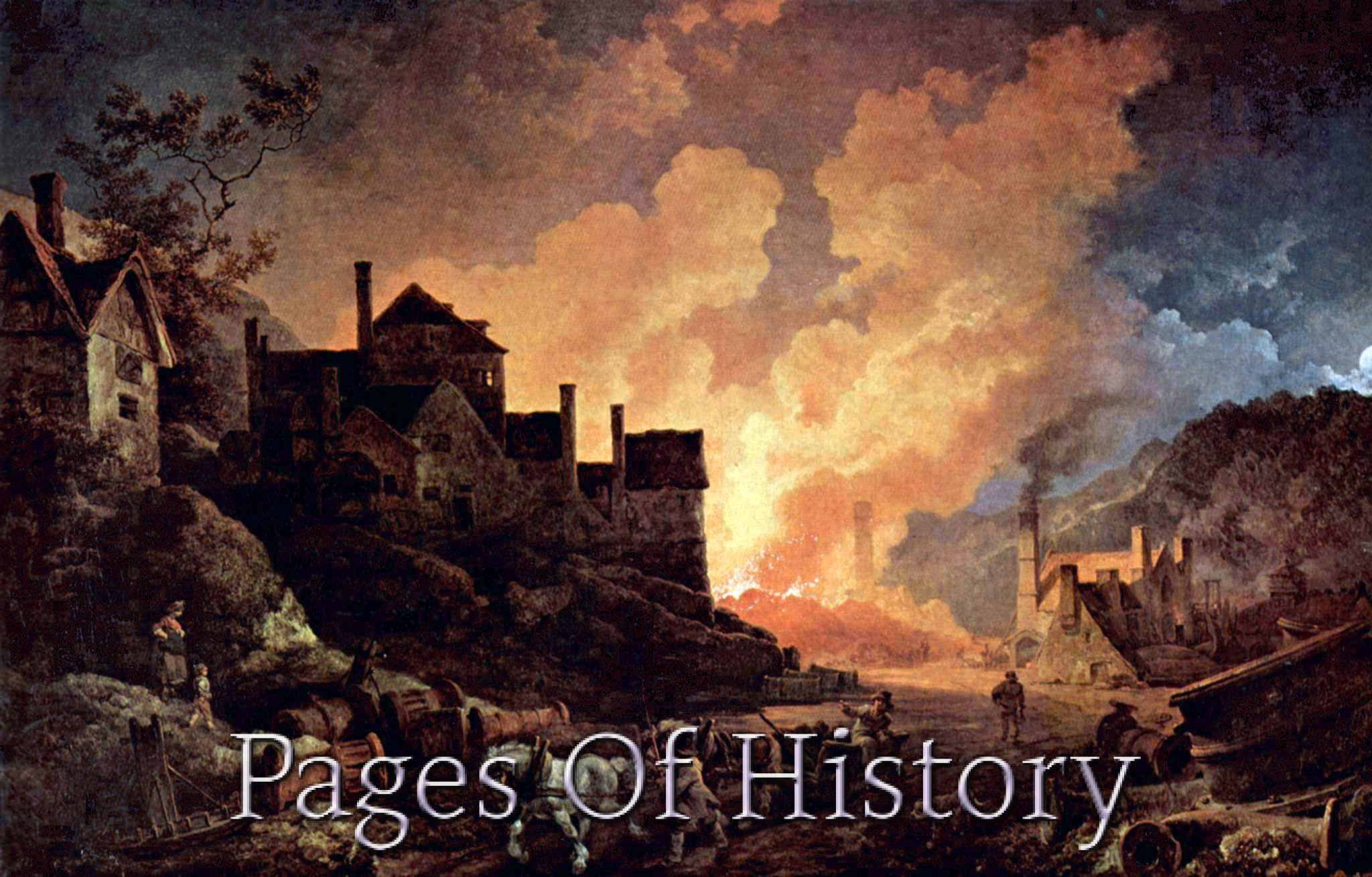
Table of Contents
The Industrial Revolution Causes and Effects
The Industrial Revolution, which began in the late 18th century and continued well into the 19th century, was a transformative period in human history. This era of rapid industrialization and technological advancements led to significant social, economic, and environmental changes that still shape the modern world. In this comprehensive article, we will explore the major causes and far-reaching effects of the Industrial Revolution, keeping in mind the principles of SEO to ensure maximum visibility and engagement.
Background and Context
Before diving into the causes and effects of the Industrial Revolution, it's essential to understand the historical context in which it took place. The period preceding the Industrial Revolution was characterized by agrarian societies and a predominantly rural lifestyle. However, as the revolution unfolded, it laid the foundation for urbanization and a shift towards an industrial, modern society.
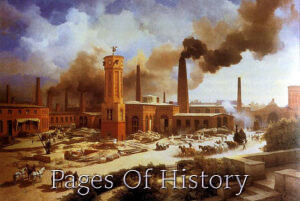
Causes of the Industrial Revolution
Agricultural revolution.
The Agricultural Revolution played a pivotal role in setting the stage for the Industrial Revolution. Agricultural advancements such as crop rotation, selective breeding, and new farming equipment led to higher crop yields and increased food production. As a result, the population grew, and fewer people were needed to work the land, freeing up labor for industrial pursuits.
Population Growth
A growing population provided the necessary labor force for the burgeoning industries. As agricultural innovations increased food production, the death rate decreased while the birth rate rose. This led to a larger workforce, which in turn fueled the demand for goods and services, driving industrial expansion.
Technological Innovations
The introduction of groundbreaking technologies and machinery was a driving force behind the Industrial Revolution. The invention of the steam engine, the spinning jenny, and the power loom, among others, revolutionized industries such as textiles, transportation, and manufacturing.
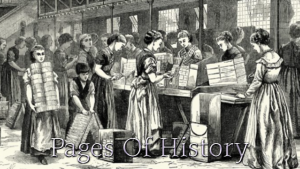
Economic Factors
The growth of trade and the expansion of markets played a significant role in the Industrial Revolution. The development of the banking system, the establishment of stock exchanges, and the accumulation of capital provided the financial resources necessary for industrial expansion.
Political and Social Factors
Political stability and a favorable social climate were critical in fostering the Industrial Revolution. Governments supported the development of infrastructure, such as roads, canals, and railways, which facilitated the movement of goods and people. Additionally, a spirit of entrepreneurship and innovation flourished during this period.
Colonial Expansion and Raw Materials
The expansion of European colonial empires provided a steady supply of raw materials, which were essential for the growth of industries. Cotton, timber, and minerals were imported from colonies in Asia, Africa, and the Americas, fueling the production of goods in factories and workshops. Furthermore, colonial territories offered new markets for manufactured goods, fostering a global exchange of products and ideas.
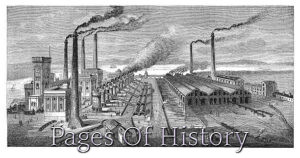
Cultural and Intellectual Climate
The intellectual atmosphere during the 18th and 19th centuries played a crucial role in promoting the Industrial Revolution. The Enlightenment, a period of intellectual and philosophical development, encouraged critical thinking, scientific inquiry, and the pursuit of knowledge. This environment nurtured the minds of inventors and entrepreneurs, who were inspired to develop new technologies and challenge existing economic and social systems.
Effects of the Industrial Revolution
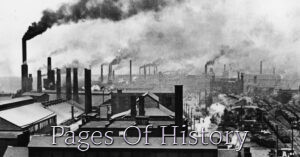
Economic Effects
The Industrial Revolution led to unprecedented economic growth, increased productivity, and the expansion of global trade. As new industries emerged, job opportunities increased, and a new class of industrialists and entrepreneurs was born. However, this growth also led to income inequality and harsh working conditions for many laborers.
Social Effects
The Industrial Revolution transformed societies, leading to urbanization, increased literacy rates, and the rise of a new working class. The shift from agrarian to industrial economies led to the growth of cities and the development of new social institutions. However, it also resulted in overcrowded cities, poor living conditions, and various public health issues.
Environmental Effects
The Industrial Revolution had significant environmental impacts, including deforestation, pollution, and habitat destruction. The widespread use of coal as a primary energy source led to air and water pollution, contributing to the infamous smog that blanketed many industrial cities. The rapid expansion of industries and urban areas also led to deforestation, the depletion of natural resources, and the loss of wildlife habitats. These environmental challenges persist today, as we continue to grapple with the consequences of industrialization and the need for sustainable development.
Political Effects
The Industrial Revolution profoundly impacted the political landscape, contributing to the rise of new ideologies and the establishment of powerful nation-states. As industrialization and urbanization progressed, demands political reform grew, resulting in the expansion of voting rights and the emergence of labor movements. New ideologies such as socialism, liberalism, and conservatism emerged, shaping the political discourse and driving social change.
Educational and Technological Effects
As the demand for skilled labor increased, so too did the need for education and training. The Industrial Revolution prompted the establishment of public education systems, technical schools, and vocational training programs to develop a skilled workforce capable of meeting the demands of the evolving industries. These educational advancements, in turn, facilitated further technological innovation and progress, setting the stage for future industrial and technological revolutions.
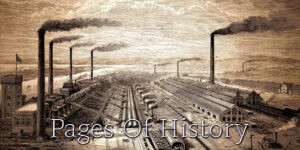
Global Impact of the Industrial Revolution
The Industrial Revolution did not remain confined to Britain but spread to other parts of the world. Europe, North America, and eventually Asia and Africa underwent their own industrial transformations, leading to the rise of global powers and the expansion of colonial empires. The global exchange of goods, ideas, and innovations increased interconnectivity among nations, shaping the political and economic landscape of the modern world.
Spread of Industrialization
Industrialization gradually spread beyond the borders of Britain, influencing other countries to adopt and adapt new technologies and methods. Countries like the United States, Germany, France, and Japan experienced their own industrial revolutions, each with unique characteristics and consequences. This global spread of industrialization contributed to a more interconnected world, with countries increasingly reliant on one another for trade, resources, and technology.
The shift in Global Power Dynamics
As industrialization spread, the balance of global power shifted, with industrialized nations gaining economic and military strength. This led to increased competition among nations and the emergence of new global powers. The industrialization of the United States, for example, transformed it into an economic powerhouse, while Japan's rapid modernization in the late 19th and early 20th centuries allowed it to become a dominant force in Asia.
Legacy of the Industrial Revolution
The Industrial Revolution has left an indelible mark on human history, shaping the way we live, work, and interact today. It paved the way for subsequent technological advancements, such as the Digital Revolution, and has contributed to our modern understanding of economics, politics, and society. However, it also serves as a cautionary tale of the potential negative consequences of unchecked industrial growth, reminding us of the importance of sustainable development and social equity.
Lessons for the Future
The Industrial Revolution offers valuable insights into the relationship between technological progress, economic growth, and social change. As we face new challenges in the 21st century, such as climate change, resource depletion, and growing inequality, we can draw upon the lessons of the Industrial Revolution to develop more sustainable and equitable solutions. This includes embracing renewable energy sources, promoting resource efficiency, and fostering a more inclusive economic system that benefits all members of society.
Impact on Modern Labor and Workforce
The Industrial Revolution significantly influenced the nature of work and the workforce. The shift from small-scale craft production to large-scale factory production led to the development of new organizational structures and management techniques. These innovations, such as the division of labor, laid the groundwork for modern corporations and the concept of wage labor. Today, as automation and artificial intelligence continue to transform the nature of work, we can look back at the Industrial Revolution for insights into how societies adapt to changing labor conditions and the future of work.

Globalization and its Implications
The Industrial Revolution played a critical role in the early stages of globalization, as it facilitated the exchange of goods, ideas, and people across national borders. The expansion of global trade networks, the development of new means of communication and transportation, and the rise of multinational corporations can all be traced back to the Industrial Revolution. However, globalization has also increased inequality, cultural homogenization, and environmental degradation, highlighting the need for more equitable and sustainable approaches to international cooperation and development.
The Industrial Revolution and the Environment
In "The Industrial Revolution and the Environment," we examine the complex relationship between the unprecedented industrial growth of the 18th and 19th centuries and its lasting impact on our planet's ecosystems. As the Industrial Revolution progressed, the rapid expansion of industries, urban areas, and resource extraction led to significant environmental consequences, including deforestation, pollution, and habitat destruction. This section will explore the various ways in which the Industrial Revolution has shaped our understanding of the environment and the challenges we face today, as well as the lessons we can learn from this transformative period to promote a more sustainable and responsible approach to development and resource use in the modern world.
Lessons for Sustainable Development
The environmental consequences of the Industrial Revolution serve as a stark reminder of the need for sustainable development in the modern world. As we confront pressing environmental challenges, such as climate change and resource scarcity, we can look to the past for guidance on striking a balance between economic growth and environmental stewardship. This includes embracing circular economy principles, investing in clean technologies, and promoting responsible consumption and production patterns.
The Role of Government and Policy
The Industrial Revolution provides valuable insights into the role of government and policy in shaping the course of economic development and addressing social and environmental challenges. Governments played a critical role in supporting the development of infrastructure, promoting technological advancements, and fostering a stable and conducive environment for industrial growth. As we confront the challenges of the 21st century, the lessons of the Industrial Revolution can inform the development of effective policies and regulations that promote sustainable and equitable development.
The Industrial Revolution was a transformative period marked by significant technological advancements, economic growth, and social change. It was driven by factors such as the Agricultural Revolution, population growth, technological innovations, and economic expansion. The effects of the Industrial Revolution were far-reaching, including urbanization, the rise of a new working class, global trade, and environmental degradation. As we continue to grapple with the legacy of this period, it is crucial to learn from both its successes and shortcomings, striving for a more equitable and sustainable future.
Reference & Pictures
- Ashton, T. S. (1948). The Industrial Revolution (1760-1830). Oxford University Press. URL: https://archive.org/details/in.ernet.dli.2015.185350
- Landes, D. S. (1969). The Unbound Prometheus: Technological Change and Industrial Development in Western Europe from 1750 to the Present. Cambridge University Press. URL: https://www.cambridge.org/core/books/unbound-prometheus/8A67264ABE3A738BA89FF1D840EBBE07
- Mokyr, J. (2009). The Enlightened Economy: An Economic History of Britain 1700-1850. Yale University Press. URL: https://yalebooks.yale.edu/book/9780300189516/enlightened-economy
- Smil, V. (2017). Energy and Civilization: A History. The MIT Press. URL: https://mitpress.mit.edu/books/energy-and-civilization
- Stearns, P. N. (1998). The Industrial Revolution in World History. Westview Press. URL: https://www.routledge.com/The-Industrial-Revolution-in-World-History/Stearns/p/book/9780813347295
- Industrial Revolution - Wikipedia
No related posts.
Leave a Comment Cancel reply
Save my name, email, and website in this browser for the next time I comment.
- Understanding the Causes of World War I
Exploring Nigerian Culture
- Holidays and Celebrations: Exploring World History Through Medieval Times
- Understanding the Greenhouse Effect: An Overview of Global Climate Change
- Knights and Chivalry
- Code of Conduct
- Armor and Weapons
- Medieval Life
- Health and Medicine
- Holidays and Celebrations
- Serfs and Peasants
- Kings and Lords
- City-States
- Gods and Goddesses
- Julius Caesar
- Industrial Revolution
- Impact on Society
- World War II
- Allied Powers
- Atomic Bomb
- World War I
- Treaty of Versailles
- Major Battles
- Leaders and Rulers
- Alexander the Great
- Queen Elizabeth I
- Napoleon Bonaparte
- Activists and Reformers
- Nelson Mandela
- Susan B. Anthony
- Mahatma Gandhi
- Scientists and Inventors
- Thomas Edison
- Marie Curie
- Albert Einstein
- Fall of the Berlin Wall
- Cuban Missile Crisis
- Civil Rights Movement
- Martin Luther King Jr.
- Segregation
- Climate Change
- Renewable Energy
- Greenhouse Effect
- Impact on Environment
- African Cultures
- Egyptian Culture
- Nigerian Culture
- Asian Cultures
- Japanese Culture
- Indian Culture
- Chinese Culture
- Latin American Cultures
- Aztec Civilization
- Mayan Civilization
- Inca Civilization
- Natural Disasters
- Tsunami in Japan
- Hurricane Katrina
- Pompeii Eruption
- Important Events
- Signing of the Declaration of Independence
- Discovery of Penicillin
- Moon Landing
- Cultural Achievements
- Renaissance Art
- Ancient Chinese Inventions
- Assessment Tools
- Projects and Presentations
- Writing Assignments
- Quizzes and Tests
- Teaching Methods
- Interactive Learning
- Primary Sources
- Role-playing
- Educational Resources
- Online Databases
- Educational Games
- Museums and Exhibits
- Photographs and Artifacts
- Government Documents
- Diaries and Letters
- Online Sources
- Websites and Blogs
- Digital Archives
- Books and Literature
- Historical Fiction
- Biographies
- Impact on Society During the Industrial Revolution
The Industrial Revolution was a period of rapid technological advancements that transformed society in numerous ways. It was a time of great change, and its impact on society was immense. From the development of new machinery to the emergence of new industries, the Industrial Revolution had a profound effect on people's lives. In this article, we will explore the impact of the Industrial Revolution on society and how it shaped the modern era.
We will delve into the various aspects of this period and analyze its effects on different sectors such as economy, culture, and social structure. So let's dive into the world of the Industrial Revolution and discover its significance in shaping the society we know today. The Industrial Revolution was a period of great change and innovation that transformed the way people lived and worked. It began in Britain in the late 1700s and quickly spread to other parts of Europe and North America. This revolution was characterized by the development of new technologies, such as the steam engine and textile machinery, which drastically increased production and efficiency in various industries. One of the main impacts of the Industrial Revolution was the rise of factories and mass production.
With the introduction of machines, goods could now be produced at a much faster rate and with less manual labor. This led to an increase in urbanization as people moved from rural areas to cities in search of employment in these new factories. The rise of factories also brought about significant changes in social, economic, and political structures. The working class emerged as a new social class, with factory workers facing harsh working conditions and low wages. This led to the formation of labor unions and the rise of socialism as a response to the unequal distribution of wealth. Economically, the Industrial Revolution brought about a shift from an agrarian society to an industrial one.
This resulted in a significant increase in productivity and economic growth, leading to the accumulation of wealth for the upper class. However, this also widened the gap between the rich and the poor, creating a stark divide between the haves and have-nots. Politically, the Industrial Revolution also had a profound impact. As more people moved to cities, there was a need for better infrastructure and public services. This led to reforms in government policies and the emergence of new political ideologies such as liberalism and conservatism. In conclusion, the Industrial Revolution had a lasting impact on society, shaping the world we live in today.
The Rise of Factories and Mass Production
Urbanization and population growth, economic effects, political shifts, social changes.
The working class emerged as a new social class, and the gap between the rich and poor grew wider. In conclusion, the Industrial Revolution had a significant impact on society, from its economic and political effects to its social and cultural changes. It transformed the way people lived, worked, and interacted with one another, and its effects can still be seen in our modern world. By understanding the impact of this period in history, we can gain a deeper understanding of our global society today.
New Articles
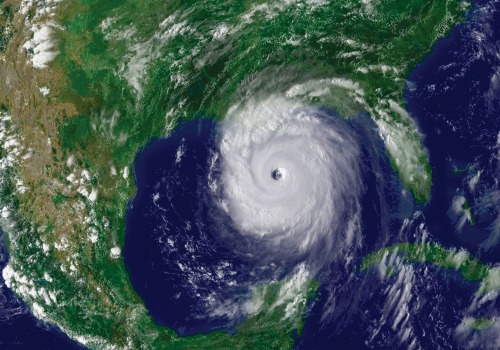
- The Devastation of Hurricane Katrina: A Look Back at One of the Deadliest Natural Disasters in World History
Learn about Hurricane Katrina and its impact on the world. From the historical context to the devastation it caused, this article covers all aspects of this natural disaster.
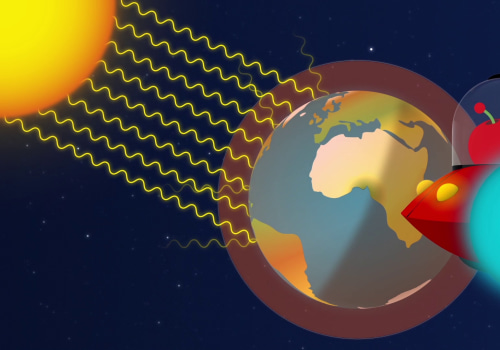
Learn about the Greenhouse Effect and its impact on global climate change in this comprehensive article.

- Exploring the World Through Educational Games
Unleashing the Power of Education with Games
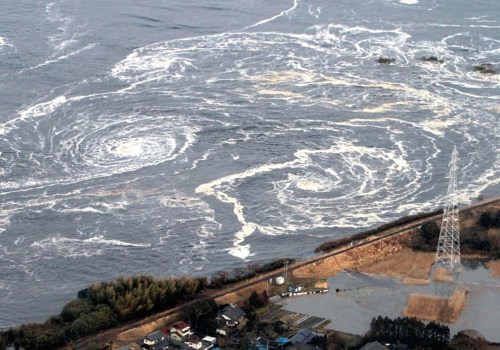
- Understanding Tsunami in Japan
A comprehensive look at the natural disaster that shook Japan and affected the world.
Top Articles

- Discover the Impact of Susan B. Anthony on World History

- Understanding Historical Fiction: A Comprehensive Overview

- The Cuban Missile Crisis: A Defining Moment in World History

- Exploring World History Through Government Documents
- Exploring Ancient Chinese Inventions
- A Brief Overview of Albert Einstein's Life and Contributions
- Exploring Projects and Presentations in World History
- Diaries and Letters: Exploring Primary Sources of World History
- Discovering Egyptian Culture
- Exploring the Rise and Fall of the Empire: A Journey Through Ancient Rome
- The Life and Legacy of Mahatma Gandhi
- Exploring the World of Manors
- Writing Assignments: A Comprehensive Guide to World History Education
- The Cold War's Impact on the Space Race: A Comprehensive Overview
- A Journey Through History: Exploring Digital Archives
- Discovering Daily Life in Medieval Times
- Photographs and Artifacts: Exploring the Past Through Primary Sources
- Marie Curie: A Pioneer in Science and History
- A Brief History of Factories in the Modern Era
- Understanding the Impact of the Atomic Bomb
- Martin Luther King Jr.: A Champion for Civil Rights
- Alexander the Great: The Legendary Leader Who Conquered the World
- Understanding Indian Culture: A Journey Through Time
- The Discovery of Penicillin: Uncovering the Life-Saving Antibiotic
- The Fascinating World of the Inca Civilization: A Journey Through Latin American Cultures
- The Power of Role-Playing: Exploring World History Through Immersive Education
- The Signing of the Declaration of Independence: A Pivotal Moment in World History
- Exploring Primary Sources in World History
- The Impact on the Environment: Understanding the Effects of Climate Change
- The Rise and Fall of Gladiators in Ancient Rome
- Textbooks: A Comprehensive Resource for Understanding World History
- Understanding Quizzes and Tests in World History
- Understanding Serfs and Peasants in Medieval Times
- Julius Caesar: The Life and Legacy of a Roman Emperor
- Discover the Richness of Chinese Culture
- Rosa Parks: The Mother of the Civil Rights Movement
- Exploring the World of Renewable Energy
- Exploring the World of Gods and Goddesses
- The Devastating Pompeii Eruption: A Comprehensive Look into One of the World's Most Notorious Natural Disasters
- The Marvelous Pyramids of Ancient Egypt: An Introduction to One of the World's Greatest Wonders
A Brief History of Major Battles in World War I
- Discovering the Genius of Thomas Edison
- Podcasts for Exploring World History
- A Fascinating Look into the World of Pharaohs
- Understanding the Code of Conduct in Medieval Times
- The Fascinating World of Biographies: A Comprehensive Look into Historical Figures and Events
- The Fascinating World of Renaissance Art
- Exploring the Fascinating Mayan Civilization: A Journey Through Time
- An Overview of Mythology in Ancient Greece
- Napoleon Bonaparte: The Rise and Fall of a Revolutionary Leader
- Health and Medicine in Medieval Times: Exploring the Connection between Body and Mind
- Exploring the Life and Reign of Queen Elizabeth I
- A Journey to the Moon: Exploring the History of the Moon Landing
- Inventions Throughout History: A Journey Through the Modern Era and Industrial Revolution
- Nelson Mandela: A Leader in the Fight for Equality
- Museums and Exhibits: Unlocking the Secrets of World History
- Understanding Segregation: A Comprehensive Look at Global Events and the Civil Rights Movement
- A Journey Through the City-States of Ancient Greece
- The Fall of the Berlin Wall: A Defining Moment in World History
- The Impact and Significance of the Treaty of Versailles in World History
- Understanding the Allied Powers in World War II
- Understanding the Crusades: A Journey Through Medieval Times
- Uncovering the Mysteries of Mummies
- Websites and Blogs: A Comprehensive Overview of World History Resources
- A Brief History of Kings and Lords: Exploring Medieval Times and Feudalism
- A Brief Overview of the Fascinating Inca Civilization

The Power of Online Databases: Unlocking the Secrets of World History
- Exploring the Rich History of the Aztec Civilization
- Exploring World History Through Interactive Learning
- Exploring the Fascinating World of Armor and Weapons
- Discovering the Richness of Japanese Culture

Which cookies do you want to accept?
Home — Essay Samples — History — History of the United States — Industrial Revolution
Essays on Industrial Revolution
Industrial revolution essay topics and outline examples, essay title 1: the industrial revolution: catalyst for economic transformation and social change.
Thesis Statement: This essay explores the Industrial Revolution as a pivotal period in history, analyzing its role as a catalyst for economic transformation, technological innovation, and significant societal changes in labor, urbanization, and living conditions.
- Introduction
- The Emergence of Industrialization: Transition from Agrarian to Industrial Society
- Technological Advancements: Inventions and Their Impact on Production
- Factory System and Labor: The Changing Nature of Work
- Urbanization and Its Consequences: The Growth of Industrial Cities
- Social Reforms and Challenges: Responses to Inequities and Labor Conditions
- Legacy of the Industrial Revolution: Long-Term Effects on Modern Society
Essay Title 2: The Dark Side of Progress: Environmental Consequences and Labor Exploitation during the Industrial Revolution
Thesis Statement: This essay critically examines the Industrial Revolution, shedding light on its environmental consequences, the exploitation of laborers, and the ethical dilemmas that arose as a result of rapid industrialization.
- Environmental Impact: Pollution, Deforestation, and Resource Depletion
- Factory Conditions and Child Labor: The Human Cost of Industrialization
- Ethical Considerations: Debates on Economic Gain vs. Social Welfare
- Worker Movements and Labor Reforms: Struggles for Workers' Rights
- The Industrial Revolution and Globalization: Impact Beyond Borders
- Reevaluating Progress: Lessons for Sustainable Development
Essay Title 3: The Industrial Revolution and Its Influence on Modern Economic Systems and Technological Advancements
Thesis Statement: This essay analyzes the profound influence of the Industrial Revolution on contemporary economic systems, technological innovations, and the enduring legacy of industrialization in shaping our modern world.
- Capitalism and Industrialization: The Birth of Modern Economic Systems
- Technological Breakthroughs: The Impact of the Steam Engine, Textile Industry, and More
- The Role of Industrial Giants: Key Figures and Their Contributions
- Globalization and Trade Networks: Connecting Continents and Markets
- Innovation and the Information Age: Tracing Technological Progress
- Contemporary Challenges and Opportunities: Navigating the Post-Industrial World
Prompt Examples for Industrial Revolution Essays
The impact of industrialization on society.
Examine the social consequences of the Industrial Revolution. How did the shift from agrarian economies to industrialized societies affect the lives of individuals, families, and communities? Discuss changes in work, living conditions, and social structures.
The Role of Technological Advancements
Analyze the technological innovations that drove the Industrial Revolution. Explore the inventions and advancements in industry, transportation, and communication that transformed economies and societies. Discuss their significance and long-term effects.
Economic Transformation and Capitalism
Discuss the economic aspects of the Industrial Revolution. How did the rise of industrial capitalism reshape economic systems and create new opportunities and challenges for businesses and workers? Analyze the growth of factories, trade, and global markets.
Labor Movements and Workers' Rights
Examine the emergence of labor movements and workers' rights during the Industrial Revolution. Discuss the conditions and struggles faced by laborers and the efforts to improve working conditions, wages, and labor laws. Explore the role of unions and collective action.
Urbanization and the Growth of Cities
Explore the process of urbanization and the rapid growth of cities during the Industrial Revolution. Discuss the challenges and opportunities presented by urban life, including issues of overcrowding, sanitation, and social inequality.
Environmental Impacts and Sustainability
Analyze the environmental impacts of industrialization. How did the Industrial Revolution contribute to pollution, resource depletion, and environmental degradation? Discuss the early awareness of these issues and the emergence of sustainability concerns.
The Sadler Report and The Industrial Revolution
English textile factories dbq, made-to-order essay as fast as you need it.
Each essay is customized to cater to your unique preferences
+ experts online
How Did Industrialization Change American Society
The industrial revolution in the uk , europe and north america, the worldwide impact of the industrial revolution in the 18th and 19th centuries, an overview of the changes during the industrial revolution, let us write you an essay from scratch.
- 450+ experts on 30 subjects ready to help
- Custom essay delivered in as few as 3 hours
The Industrial Revolution in Great Britain
Rough draft for the industrial revolution, the most important factors that contributed to america’s industrial revolution, advancements in agriculture as factors in the emergence of industrial revolution, get a personalized essay in under 3 hours.
Expert-written essays crafted with your exact needs in mind
Industrial Revolution & The Industrial Design Industry
Various impacts of the industrial revolution of the xviii century, the influence of industrial revolution on children and families, development of industrial revolution of europe, nanotechnology the industrial revolution of the 21st century, the industrial revolutions: important part of our history, the influence of industrial revolution on the modern day textile industry, child labor was crucial for the industrial revolution, industrial revolution influence on the criminal justice system, important role of inventors shape society, economics and culture, impact of andrew carnegie’s ideology on the united states, the article on the fourth industrial revolution, industrial revolutions & the development of democracy worldwide, impact of the fourth industrial revolution on my future, analysis of industrial revolutions throughout history, the role of scientific revolution, the enlightenment, the french revolution, and the industrial revolution in the history of europe, the effects of the market revolution from 1800 through 1860, craftsmanship and influence of industrial revolution, a study of the captains of industrial revolution carnegie, rockefeller and others, different stages of maturity compared to digital masters.
1733 - 1913
The Industrial Revolution began in Great Britain in the mid-18th century. The Industrial Revolution was the transition to new manufacturing processes in the United Kingdom, Europe and the United States. The beginning of industrialization in the United States is started with the opening of a textile mill in Pawtucket, Rhode Island, in 1793 by Samuel Slater.
There was a few reasons of the beginning of Industrial Revolution: shortage of wood and the abundance of convenient coal deposits; high literacy rates; cheap cotton produced by slaves in North America; system of free enterprise.
Samuel Slater is most associated with starting up the textiles industry in the U.S. An early English-American industrialist known as the "Father of the American Industrial Revolution" and the "Father of the American Factory System". He opened a textile mill in Pawtucket, Rhode Island, in 1793.
There were many improvements in technology and manufacturing fundamentals that improved overall production and economic growth in the United States. Several great American inventions affected manufacturing, communications, transportation, and commercial agriculture.
The Industrial Revolution resulted in greater wealth and a larger population in Europe as well as in the United States. From 1700 to 1900, there was huge migration of people living in villages to moving into towns and cities for work. The Industrial Revolution marked a major turning point in history. During the Industrial Revolution, environmental pollution increased.
Relevant topics
- Civil Rights Movement
- American Revolution
- Great Depression
- Manifest Destiny
- Pearl Harbor
- Westward Expansion
- Frederick Douglass
By clicking “Check Writers’ Offers”, you agree to our terms of service and privacy policy . We’ll occasionally send you promo and account related email
No need to pay just yet!
We use cookies to personalyze your web-site experience. By continuing we’ll assume you board with our cookie policy .
- Instructions Followed To The Letter
- Deadlines Met At Every Stage
- Unique And Plagiarism Free
Top of page
Primary Source Set The Industrial Revolution in the United States
- Student Discovery Set - free ebook on iBooks External

The resources in this primary source set are intended for classroom use. If your use will be beyond a single classroom, please review the copyright and fair use guidelines.
Teacher’s Guide
To help your students analyze these primary sources, get a graphic organizer and guides: Analysis Tool and Guides
The Industrial Revolution took place over more than a century, as production of goods moved from home businesses, where products were generally crafted by hand, to machine-aided production in factories. This revolution, which involved major changes in transportation, manufacturing, and communications, transformed the daily lives of Americans as much as— and arguably more than—any single event in U.S. history.
An early landmark moment in the Industrial Revolution came near the end of the eighteenth century, when Samuel Slater brought new manufacturing technologies from Britain to the United States and founded the first U.S. cotton mill in Beverly, Massachusetts. Slater’s Mill in Pawtucket, Rhode Island, like many of the mills and factories that sprang up in the next few decades, was powered by water, which confined industrial development to the northeast at first. The concentration of industry in the Northeast also facilitated the development of transportation systems such as railroads and canals, which encouraged commerce and trade.
The technological innovation that would come to mark the United States in the nineteenth century began to show itself with Robert Fulton’s establishment of steamboat service on the Hudson River, Samuel F. B. Morse’s invention of the telegraph, and Elias Howe’s invention of the sewing machine, all before the Civil War. Following the Civil War, industrialization in the United States increased at a breakneck pace. This period, encompassing most of the second half of the nineteenth century, has been called the Second Industrial Revolution or the American Industrial Revolution. Over the first half of the century, the country expanded greatly, and the new territory was rich in natural resources. Completing the first transcontinental railroad in 1869 was a major milestone, making it easier to transport people, raw materials, and products. The United States also had vast human resources: between 1860 and 1900, fourteen million immigrants came to the country, providing workers for an array of industries.
The American industrialists overseeing this expansion were ready to take risks to make their businesses successful. Andrew Carnegie established the first steel mills in the U.S. to use the British “Bessemer process” for mass producing steel, becoming a titan of the steel industry in the process. He acquired business interests in the mines that produced the raw material for steel, the mills and ovens that created the final product and the railroads and shipping lines that transported the goods, thus controlling every aspect of the steelmaking process.
Other industrialists, including John D. Rockefeller, merged the operations of many large companies to form a trust. Rockefeller’s Standard Oil Trust came to monopolize 90% of the industry, severely limiting competition. These monopolies were often accused of intimidating smaller businesses and competitors in order to maintain high prices and profits. Economic influence gave these industrial magnates significant political clout as well. The U.S. government adopted policies that supported industrial development such as providing land for the construction of railroads and maintaining high tariffs to protect American industry from foreign competition.
American inventors like Alexander Graham Bell and Thomas Alva Edison created a long list of new technologies that improved communication, transportation, and industrial production. Edison made improvements to existing technologies, including the telegraph while also creating revolutionary new technologies such as the light bulb, the phonograph, the kinetograph, and the electric dynamo. Bell, meanwhile, explored new speaking and hearing technologies, and became known as the inventor of the telephone.
For millions of working Americans, the industrial revolution changed the very nature of their daily work. Previously, they might have worked for themselves at home, in a small shop, or outdoors, crafting raw materials into products, or growing a crop from seed to table. When they took factory jobs, they were working for a large company. The repetitive work often involved only one small step in the manufacturing process, so the worker did not see or appreciate what was being made; the work was often dangerous and performed in unsanitary conditions. Some women entered the work force, as did many children. Child labor became a major issue. Dangerous working conditions, long hours, and concern over wages and child labor contributed to the growth of labor unions. In the decades after the Civil War, workers organized strikes and work stoppages that helped to publicize their problems. One especially significant labor upheaval was the Great Railroad Strike of 1877. Wage cuts in the railroad industry led to the strike, which began in West Virginia and spread to three additional states over a period of 45 days before being violently ended by a combination of vigilantes, National Guardsmen, and federal troops. Similar episodes occurred more frequently in the following decades as workers organized and asserted themselves against perceived injustices.
The new jobs for the working class were in the cities. Thus, the Industrial Revolution began the transition of the United States from a rural to an urban society. Young people raised on farms saw greater opportunities in the cities and moved there, as did millions of immigrants from Europe. Providing housing for all the new residents of cities was a problem, and many workers found themselves living in urban slums; open sewers ran alongside the streets, and the water supply was often tainted, causing disease. These deplorable urban conditions gave rise to the Progressive Movement in the early twentieth century; the result would be many new laws to protect and support people, eventually changing the relationship between government and the people.
The Industrial Revolution is a complex set of economic, technological, and social changes that occurred over a substantial period of time. Teachers should consider the documents in this collection as tools for stimulating student thinking about aspects of the Industrial Revolution.
Suggestions for Teachers
- After providing a definition of the Industrial Revolution and explaining the time span across which it took place, teachers might supply small groups of students with a set of the documents in this primary source set. Students can categorize the documents by whether they provide information about what happened, why it happened, or its effects. Some documents may fit into more than one category. When small groups have completed their work, the teacher can facilitate creating a class list of events of the Industrial Revolution, causes (or supporting factors), and effects. Students may search the Library’s online collections to find additional evidence to support the causes and effects on the class chart.
- Using the documents in this primary source set, students can create a timeline of important events in the Industrial Revolution. The last document in the set is dated 1919. Was the Industrial Revolution over by 1919? Challenge students to find evidence in the Library of Congress digital collections to support their answer (there are documents that suggest industrialization in the South was still taking place into the 1930s).
- Understanding a historical event as it was experienced by those who lived through it is an important skill of historical thinking—and one that can be difficult to develop. Teachers may challenge students to study documents in the collection to identify varied perspectives on the changes brought by the Industrial Revolution, as experienced by people of the day. Would students classify the responses as mainly positive, mainly negative, or about equally divided? How did people respond to what they perceived as negative effects of the Industrial Revolution?
- In 1893, Chicago hosted the World’s Columbian Exposition, which highlighted achievements of the United States and other nations in a variety of fields, including manufacturing and technology. An entire building was devoted to electricity. Using the primary source set as a starting point, ask students to design an exhibit about the development of American industry for the World’s Columbian Exposition.
Additional Resources

Detroit Publishing Company

Built in America

Alexander Graham Bell Family Papers at the Library of Congress

Inside an American Factory: Films of the Westinghouse Works

National Child Labor Committee Collection
153 Industrial Revolution Essay Topics & Examples
If you’re looking for the Industrial Revolution essay examples and topics, this page is for you. Below, find ideas on how different inventions changed the world and people.
Our IvyPanda team has provided these Industrial Revolution essay questions and topics so that you don’t have to worry about missing an engaging idea. Interested in describing the phenomenon in America or Britain? Willing to explore public health and how society changed due to new machines? We have perfect titles for you! Plus, check our tips on formulating the Industrial Revolution thesis statement and writing the essay.
The Industrial Revolution
The Industrial Revolution was the transition from creating goods by hand to using machines. Its start and end are widely debated by scholars, but the period generally spanned from about 1760 to 1840. According to some, this turning point in history is responsible for an increase in population, an increase in the standard of living, and the emergence of the capitalist economy.
Teach your students about the Industrial Revolution with these resources.
Social Studies, U.S. History, World History
- Search Search Please fill out this field.
What Was the Industrial Revolution?
- Understanding the Revolution
What Were the Effects of the Industrial Revolution on Tariffs?
Advantages of industrialization, disadvantages of industrialization, what key innovations took place during the industrial revolution.
- Industrial Revolution FAQs
Industrial Revolution Definition: History, Pros, and Cons
James Chen, CMT is an expert trader, investment adviser, and global market strategist.
:max_bytes(150000):strip_icc():format(webp)/photo__james_chen-5bfc26144cedfd0026c00af8.jpeg)
Investopedia / Matthew Collins
The Industrial Revolution was a period of major mechanization and innovation that began in Great Britain during the mid-18th century and early 19th century and later spread throughout much of the world. The British Industrial Revolution was dominated by the exploitation of coal and iron.
The American Industrial Revolution, sometimes referred to as the Second Industrial Revolution, began during the Gilded Age in the 1870s and continued through World War II. The era saw the mechanization of agriculture and manufacturing and the introduction of new modes of transportation including steamships, the automobile, and airplanes.
Key Takeaways
- The first Industrial Revolution began in Great Britain in the 1700s and 1800s and was a time of significant innovation.
- The American Industrial Revolution followed in the late 19th century and was an engine of economic growth in the U.S.
- The Industrial Revolution led to inventions that included the assembly line, telegraph, steam engine, sewing machine, and internal combustion engine.
- Working for businesses during the Industrial Revolution paid better wages than agricultural work.
- The increase in the number of factories and migration to the cities led to pollution, deplorable working and living conditions, and child labor.
How Did the Industrial Revolution Impact Society?
Although the Industrial Revolution occurred approximately 200 years ago, it is a period that left a profound impact on how people lived and the way businesses operated. Arguably, the factory systems developed during the Industrial Revolution are responsible for creating capitalism and the modern cities of today.
Before this period, most households made their living farming and lived primarily in small, rural communities. With the advent of factories during the 18th century, people began working for companies located in urban areas for the first time. Often the wages were low, and conditions were harsh. However, working for such businesses still paid a better living wage than farming.
Production efficiency improved during the Industrial Revolution with inventions such as the steam engine. The steam engine dramatically reduced the time it took to manufacture products. More efficient production subsequently reduced prices for products, primarily due to lower labor costs, opening the marketing doors to a new level of customers.
The Industrial Revolution developed in conjunction with the capitalist economies. Under capitalism, business owners (capitalists) began to organize labor centrally into factories and introduced a division of labor to increase output and profitability. Compared to the craft and guild systems that preceded it, capitalist production incentivized technological change and innovation at an unprecedented rate.
The Industrial Revolution was driven, in part, by the adoption of coal as an energy source. Before the use of coal, wood was the primary energy source; coal provided three times more energy than wood, and Britain had large coal deposits.
The Industrial Revolution was not always organic or directed alone by free market forces. The United States government, for instance, helped domestic industry at the time by instituting tariffs —taxes on foreign imported goods—so that products like steel made by U.S. companies were cheaper than foreign imports. Cheaper steel prices encouraged the development of infrastructure such as railroads and bridges during the American Industrial Revolution.
The Industrial Revolution created an increase in employment opportunities. Wages at factories were higher than what individuals were making as farmers. As factories became widespread, additional managers and employees were required to operate them, increasing the supply of jobs and overall wages.
Since most of the factories and large companies were located near cities, populations migrated to urban areas searching for jobs, often overwhelming the available housing supply. This led to significant improvements in city planning.
Increased innovation also led to higher levels of education, often resulting in several groundbreaking inventions still used today. These inventions include the sewing machine, X-ray, lightbulb, calculator, and anesthesia.
Due to the Industrial Revolution's advancements, the nation saw the first combustible engine, incandescent light bulb, and modern assembly line used in manufacturing. The Industrial Revolution changed how people worked, the technologies available to them, and in turn where they lived. It made life comfortable for many though living conditions for workers remained abhorrent, which eventually fueled the rise of labor unions that led to improved working conditions and fair wages.
Although there were numerous advancements during the Industrial Revolution, rapid progress caused many issues. As workers left their farms to work in factories for higher wages, it led to a shortage of food production.
The sharp increase in the number of factories caused an increase in urban pollution. Pollution wasn't contained only in the factories; as people flocked to the cities, living conditions became deplorable as the urban resources were overwhelmed.
Sewage flowed in the streets in some cities while manufacturers dumped waste from factories into rivers. Water supplies were not tested and protected as they are today. As a result, regulations, and laws were enacted to protect the population.
The Industrial Revolution provided an incentive to increase profits, and as a result, working conditions in factories deteriorated. Long hours, inadequate remuneration, and minimal breaks became the norm. Child labor was a significant issue. Health issues arose for many of the factory workers giving rise to the labor movement throughout the U.S .
Advancements in production
Growth in innovations and inventions
Workers earned higher wages
Improvements in transportation networks
Deplorable working conditions and child labor
Unsanitary living conditions and pollution
Food shortages
The first cotton mill was built after Samuel Slater brought Britain's manufacturing technology to the United States. The mill was powered by water bringing jobs and commerce to the Northeast. In the following years, many factories and mills were built using the same technologies.
In 1869, the first transcontinental railroad was completed and was a major accomplishment for the U.S. since it allowed the transportation of goods, people, and raw materials nationwide.
Also, during the American Industrial Revolution, Samuel Morse created the telegraph, which sent electric signals over a wire allowing the nation to communicate. Andrew Carnegie built the first steel mills in the U.S. while Alexander Graham Bell invented the telephone.
How Is the Industrial Revolution Best Defined?
The Industrial Revolution shifted societies from an agrarian economy to a manufacturing economy where products were no longer made solely by hand but by machines. This led to increased production and efficiency, lower prices, more goods, improved wages, and migration from rural areas to urban areas.
When Was the Industrial Revolution?
The first Industrial Revolution began in Great Britain in the mid-to-late 1700s when innovation led to goods being produced in large quantities due to machine manufacturing. This spread around the globe, and the Second Industrial Revolution began in the U.S. in the late 1800s that saw further advancements in technology that drove greater efficiency.
What 3 Things Played a Role in the Industrial Revolution?
Technological changes, such as the use of iron and steel, new energy sources such as coal and steam, and the factory system, led to a division of labor and specialization, which increased efficiency.
What Were the Most Important Inventions of the Industrial Revolution?
Among the most important inventions of the first Industrial Revolution include the steam engine, the spinning jenny, cotton gin, and the telegraph. This was followed by the second Industrial Revolution, which saw the advent of the internal combustion engine, controlled electricity, and the lightbulb.
University of California, Davis. " World Economic History: 2. The British Industrial Revolution, 1760-1860 ."
Smithsonian American Art Institute. " Industrial United States (1870-1900) ."
Britannica. " Inventors and Inventions of the Industrial Revolution ."
Britannica. " History of Flight ."
Library of Congress. " Rise of Industrial America, 1876-1900: Overview ."
The Brookings Institution. " Why are Fossil Fuels So Hard to Quit? "
BBC. " Why was Coal So Important to the Industrial Revolution? "
Library of Congress. " The Industrial Revolution in the United States ."
Library of Congress. " City Life in the Late 19th Century ."
Library of Congress. " Work in the Late 19th Century ."
History. " Water and Air Pollution ."
:max_bytes(150000):strip_icc():format(webp)/thinkstockphotos_80410231-5bfc2b97c9e77c0026b4fb20.jpg)
- Terms of Service
- Editorial Policy
- Privacy Policy
The key role of digital governance, natural resource depletion, and industrialization in social well-being: A case study of China
- Zhou, Yasong
Every country in the twenty-first century places the highest focus on the health and happiness of its citizens. In contrast, natural resource depletion may harm people's health, making it more challenging to achieve human well-being. The digital revolution has had an effect on society on a variety of levels, most notably on the levels of social welfare, economics, and governance. As a result, the current research looked at the effects of digital governance (DIG) from an empirical perspective of natural resource (NR) and industrial development (IND) on the human development index (HDI) using China's data sets spanning the years 1990–2021. After doing unit root tests, such as ADF and P–P, the Divot unit root test, ARDL bound co-integration and Johansen co-integration test, whereas the dynamic relationship of prescribed variables with long- and short-run analysis was checked this time around, the ARDL model was used. In addition, a rigorous evaluation of the ARDL test was conducted using co-integrating regression analysis using fully modified FMOLS, DOLS, and CCR. In China, the empirical results showed that digital governance, industrial growth, and human capital all contribute positively to HDI, whereas increasing gasoline use and natural resource extraction hurt HDI by diminishing social welfare. The research also used the Granger causality technique. Similarly, to investigate, the model of regression based on Markov switching for was used because correlations existed between the several variables. According to the Granger causality test, there is bidirectional causation between digital governance and fuel use. However, one-way causation connects human development indices, digital governance, and natural resources to gasoline use. The results obtained in our research using the ARDL technique are supported by results from the evaluation of the Granger causality that was obtained. Policymakers in the region around China and other emerging nations may learn a lot from the findings of this empirical study.
- Human development index;
- Natural resources;
- Digital governance;
- ARDL bound test approach;
- China region
- Lifestyles & Social Issues
- Philosophy & Religion
- Politics, Law & Government
- World History
- Health & Medicine
- Browse Biographies
- Birds, Reptiles & Other Vertebrates
- Bugs, Mollusks & Other Invertebrates
- Environment
- Fossils & Geologic Time
- Geography & Travel
- Entertainment & Pop Culture
- Sports & Recreation
- Visual Arts

Recently Posted
Household finance.

Biographies

Finance & the Economy

New Articles

IMAGES
VIDEO
COMMENTS
The Industrial Revolution was a time of great age throughout the world. It represented major change from 1760 to the period 1820-1840. The movement originated in Great Britain and affected everything from industrial manufacturing processes to the daily life of the average citizen. I will discuss the Industrial Revolution and the effects it had ...
Industrial Revolution, in modern history, the process of change from an agrarian and handicraft economy to one dominated by industry and machine manufacturing. These technological changes introduced novel ways of working and living and fundamentally transformed society. This process began in Britain in the 18th century and from there spread to ...
Causes. The Industrial Revolution began in Britain in the 1760s, largely with new developments in the textile industry. The spinning jenny invented by James Hargreaves could spin eight threads at the same time; it greatly improved the textile industry. Before that time making cloth was a slow process.
The effects of the Industrial Revolution were far-reaching, including urbanization, the rise of a new working class, global trade, and environmental degradation. As we continue to grapple with the legacy of this period, it is crucial to learn from both its successes and shortcomings, striving for a more equitable and sustainable future. ...
The Industrial Revolution, the period in which agrarian and handicraft economies shifted rapidly to industrial and machine-manufacturing-dominated ones, began in the United Kingdom in the 18th century and later spread throughout many other parts of the world. This economic transformation changed not only how work was done and goods were ...
The story of the Industrial Revolution begins on the small island of Great Britain. By the early 18th century, people there had used up most of their trees for building houses and ships and for cooking and heating. ... The statistics that reflect the effects of industrialization are staggering. In 1700, before the widespread use of fossil fuels ...
The Industrial Revolution of the 1800s, a time of great growth in technologies and inventions, transformed rural societies into industrialized, urban ones. ... Effects of the Industrial Revolution.
10 1.6k. The Industrial Revolution was a period of rapid technological advancements that transformed society in numerous ways. It was a time of great change, and its impact on society was immense. From the development of new machinery to the emergence of new industries, the Industrial Revolution had a profound effect on people's lives.
The story of the Industrial Revolution begins on the small island of Great Britain. By the early eighteenth century, people there had cut down most of their trees either to build houses and ships or to burn for heating and cooking. ... The effects of industrialization on global population are staggering. In 1700, before fossil fuels were in use ...
The Industrial Revolution made some social progress precisely because of the misery it produced. Britain became the wealthiest nation on Earth. Soon, British workers, politicians, and writers started looking around and wondering why—in the world's richest country—so many people lived and worked in such poor conditions.
The Industrial Revolution, sometimes divided into the First Industrial Revolution and Second Industrial Revolution, was a period of global transition of the human economy towards more widespread, efficient and stable manufacturing processes that succeeded the Agricultural Revolution.Beginning in Great Britain, the Industrial Revolution spread to continental Europe and the United States, during ...
The impact of the Industrial Revolution on Britain was wide and varied. Steam-powered machines and the factory system meant traditional skilled jobs were lost, but unskilled jobs were created. The coal, iron, and steel industries boomed. Railways were built everywhere, and consumer goods became cheaper.
The advent of industrial development revamped patterns of human settlement, labor, and family life. The changes set in motion by industrialization ushered Europe, the United States of America, and much of the world into the modern era. Most historians place the origin of the Industrial Revolution in Great Britain in the middle decades of the ...
Essay Title 3: The Industrial Revolution and Its Influence on Modern Economic Systems and Technological Advancements. Thesis Statement: This essay analyzes the profound influence of the Industrial Revolution on contemporary economic systems, technological innovations, and the enduring legacy of industrialization in shaping our modern world ...
Historians say that many of these problems persisted and grew in the Second Industrial Revolution, another period of rapid change that began in the late 1800s. Here are a few of the most ...
The coal-fired steam engine was in many respects the decisive technology of the Industrial Revolution. Steam power was first applied to pump water out of coal mines. For centuries, windmills had been employed in the Netherlands for the roughly similar operation of draining low-lying flood plains. Wind was, and is, a readily available and ...
The Industrial Revolution, which began in the mid-1700s and lasted into the mid-1800s, was similarly a revolutionary experience. It increased material wealth, extended life, and was a powerful force for social change. It undermined the centuries-old class structure in Europe and reorganized the economic and philosophical worldview of the West.
The British Industrial Revolution (1760-1840) witnessed a great number of technical innovations, such as steam-powered machines, which resulted in new working practices, which in turn brought many social changes. More women and children worked than ever before, for the first time more people lived in towns and cities than in the countryside, people married younger and had more children, and ...
Jump to: Background Suggestions for Teachers Additional Resources The Industrial Revolution took place over more than a century, as production of goods moved from home businesses, where products were generally crafted by hand, to machine-aided production in factories. This revolution, which involved major changes in transportation, manufacturing, and communications, transformed the daily lives ...
Secret #3. Industrial revolution essay positive and negative effects go beyond everyday-life. The on-going processes affected politics, economics, and even diplomacy. Highlighting these effects in your work is crucial for the creation of a convincing argument.
1170 Words. 5 Pages. Open Document. The Industrial Revolution that took place throughout the 18th and the 19th centuries had major effects which influenced every aspect of society and life such as, urbanization, imperialism and nationalism. The industrial revolution had an unfathomable effect on shaping the modern world to what it is today.
The Industrial Revolution was the transition from creating goods by hand to using machines. Its start and end are widely debated by scholars, but the period generally spanned from about 1760 to 1840. According to some, this turning point in history is responsible for an increase in population, an increase in the standard of living, and the emergence of the capitalist economy.
Industrial Revolution: The Industrial Revolution was a period of major industrialization that took place during the late 1700s and early 1800s. The Industrial Revolution began in Great Britain and ...
### Essay 2: The Industrial Revolution The Industrial Revolution, spanning from the late 18th century to the mid-19th century, marked a profound shift in human history, transforming economies, societies, and daily life in unprecedented ways. Originating in Britain, this period of rapid industrialization and technological innovation spread across Europe and North America, laying the groundwork ...
The digital revolution has had an effect on society on a variety of levels, most notably on the levels of social welfare, economics, and governance. As a result, the current research looked at the effects of digital governance (DIG) from an empirical perspective of natural resource (NR) and industrial development (IND) on the human development ...
The paradox of thrift: Understanding economic behavior in recessions. Individually great; collectively painful. Find all you need to know about retirement, investing, and household finance, without the jargon or agenda. Get guidance, insight, and easy-to-understand explanations, verified to Britannica's standards.